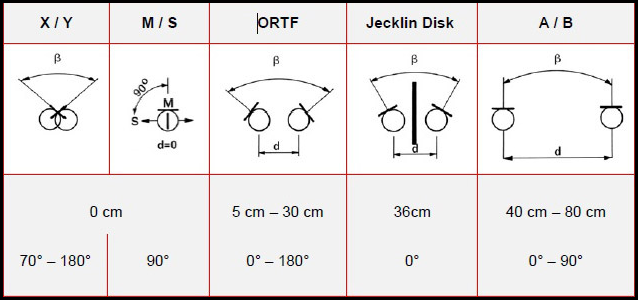Stereo Fields
Lately I've been thinking about stereo fields for single instruments. Not for my doubleneck instruments, but for my single-neck instruments. Almost all my instruments have a stereo K&K pickup system, and I further mic them up with a stereo pair of microphones when in the recording studio. I'm a big fan of, and an artist endorser for, K&K pickups. In the studio, the stereo channels from both pickups and mics are hard-panned, such that the bass register is on the left and the treble register is on the right. I've been doing this for a few years and really like it.
Background: For many years, I was trying to get a wide stereo field in my solo instrument recordings. I was using large diaphragm condensor microphones (LDCs) for most of those years, and while I liked how instruments were mic'ed, I was always struggling for the stereo field I wanted. The stereo field I was getting from LDCs was almost like enhanced mono. It was in fact stereo, but there was no width and no field of depth to it. It was not at all what I wanted.
During a live broadcast performance at WFMU radio in New York City one time around 2009 or so, I was mic'ed up with a stereo pair of small diaphragm condensor microphones (SDCs). When I saw the engineer setting them up, I was a little disappointed. At the time, I didn't like SDCs because they sounded narrower and smaller to me than LDCs. But when I put on the headphones, wow. There it was. This glorious stereo field that I'd been trying so hard for years to achieve. When I got home, I started experimenting with SDC pairs, and sure enough, the stereo field was much wider, clearer, deeper. Hence my move to SDCs.
Recently, in the Martin 12-string G baritone, I installed a Fishman | Rare Earth Mic Blend Active Pickup system. I've never liked Fishman piezo-based pickups, but this one had no piezo element or undersaddle pickup. I was interested in this pickup because I had been thinking about trying to find a pickup system for this instrument that sounded different than the K&K, just for some variety and having a different voice. I heard a guitarist using one of these and quite liked it. I met him and spoke with him about it. I also talked to another guitarist friend of mine that used one. He sent me some examples, and I liked it. It was very natural and clearly acoustic, but very different than the K&K. Not better or worse; just different. It's an interesting design: a stacked-coils humbucking pickup that's designed to sense bronze-wound strings. Prior to this, all acoustic humbucking pickups required nickel-wound strings and sounded like a bad electric guitar. In addition to the pickup, it has a small condensor SDC mic on a flexible gooseneck which you can aim in any direction inside the body of the instrument. It's meant to fit in the soundhole, and has a wired output jack that installs just like any other pickup, making for a permanent installation. The mic is active, and has its own on-board battery. There are controls for phase inversion and a blend control enabling you to have either all pickup, all mic, or any blend of the two. It's stereo, as one channel is the pickup, and the other channel is the mic. It sounds great, and I'm really liking it very much. It's also highly compatible with my K&K stereo preamp, and I can really dial-in the balance, voicing, treble/bass/mid, and so on.
The stereo field on the Fishman is interesting. I use it such that the blend is 50/50 pickup and mic. When monitoring it with headphones in tracking, it's clearly stereo, but it's nothing like the wide stereo fields I usually use. The stereo field isn't so much L/R, but more like front-to-back. I wondered if I'd like it at first, but the more I use it, the more I am liking it. I don't like it better than my usual stereo field, but I do love it as an alternative kind of thing. So now it's almost got me re-thinking what I want to hear in a stereo field for my single-neck instruments.
I've not arrived an any conclusions just yet. I've only found myself thinking about this over the past few days.
I think the hard-panned stereo field for doublenecks is unquestionably key to what I do. Using both necks and having it spread out sounds like two separate instruments and makes what I'm doing with two (or more) parts more obvious or interesting. It's also how I naturally hear it. So I'm not questioning that stereo field at all.
In fact, I'm not sure I'm questioning my single-neck stereo field. I'm just re-considering other stereo field alternatives and why for the single-necks. I'm still using more than one line or part on the single-necks, and the K&K and the stereo microphone pair image that really well.
I think part of this is that I never thought I'd ever consider another stereo field in my work at all. Maybe having two different approaches isn't a bad thing.
-kk






Comments
Post a Comment